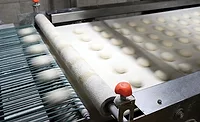Editor's Note
Food manufacturing is a big industry, but change can happen quickly

I’ve been spending a lot of time discussing blockchain lately.
These discussions have been happening for a few different reasons. The one thing they all have in common is how most people expect it to be a big change for the food industry, but they don’t know exactly what that change will be just yet. There’s a lot of excitement—and a little trepidation as well—about how the technology will change the industry, but there are also a lot of questions about when it will change the industry.
To sum up: It’s a big change, unless it isn’t, and it will happen quickly, unless it doesn’t. This certainly isn’t meant to be a slam on blockchain by any means, but rather to illustrate that in this industry, we often don’t know exactly what a change will mean until it happens, and we often don’t know when it will happen, even if we know it’s coming soon.
On the other hand, if you think about something like regulatory changes, we know well in advance when something will take place and have some time to figure out what it all means. So what we’re really looking at is something like “changes take place suddenly unless they take place slowly, and they’re really big events unless they’re not, and we can prepare for them unless we can’t.”
Half of those reading probably just threw the magazine across the room, while the other half is probably wondering how I overheard that meeting from a couple days ago.
As convoluted as all of this may sound, I bet you’ve thought something like it at many points during your career. As an industry, food manufacturing has this tension between big, sudden shifts and slow, measured changes. Both play a big role, because while a new technology such as blockchain requires being prepared to shift gears quickly, something like FSMA requires a more methodical approach to being in compliance as it comes online over time.
You’ll see examples of both of these things in our cover story, which is our annual State of Food Manufacturing Survey. Based on responses from readers, we put together a report that paints a picture of where the industry is and where you expect it to go.
Automation is a big part, of course, and you could argue that falls under the category of sudden—or at least somewhat accelerated—change. Companies are looking for more ways to automate processes and procedures for reasons ranging from labor costs to productivity needs, and as companies show they’re willing to invest in automation, vendors offer more and better automation options. Compare the range of options available now to even five years ago, and it’s an incredible change.
But regulations are obviously playing a big part in how food manufacturing is changing, and FSMA didn’t exactly sneak up on anybody. It’s a balancing act, and being unprepared for a sudden change is just as bad as trying to rush a change that needs more time to be done right. While you wouldn’t want to institute a HACCP plan in a day, you also don’t want your answer to “how can we use blockchain as part of our supply chain protocols” to be measured in years.
Like most things, identifying and responding to changes is a balancing act that requires a lot of work up front to be successful. Knowing what kind of response is merited is a big first step, and one you can’t afford to miss.
Looking for a reprint of this article?
From high-res PDFs to custom plaques, order your copy today!








